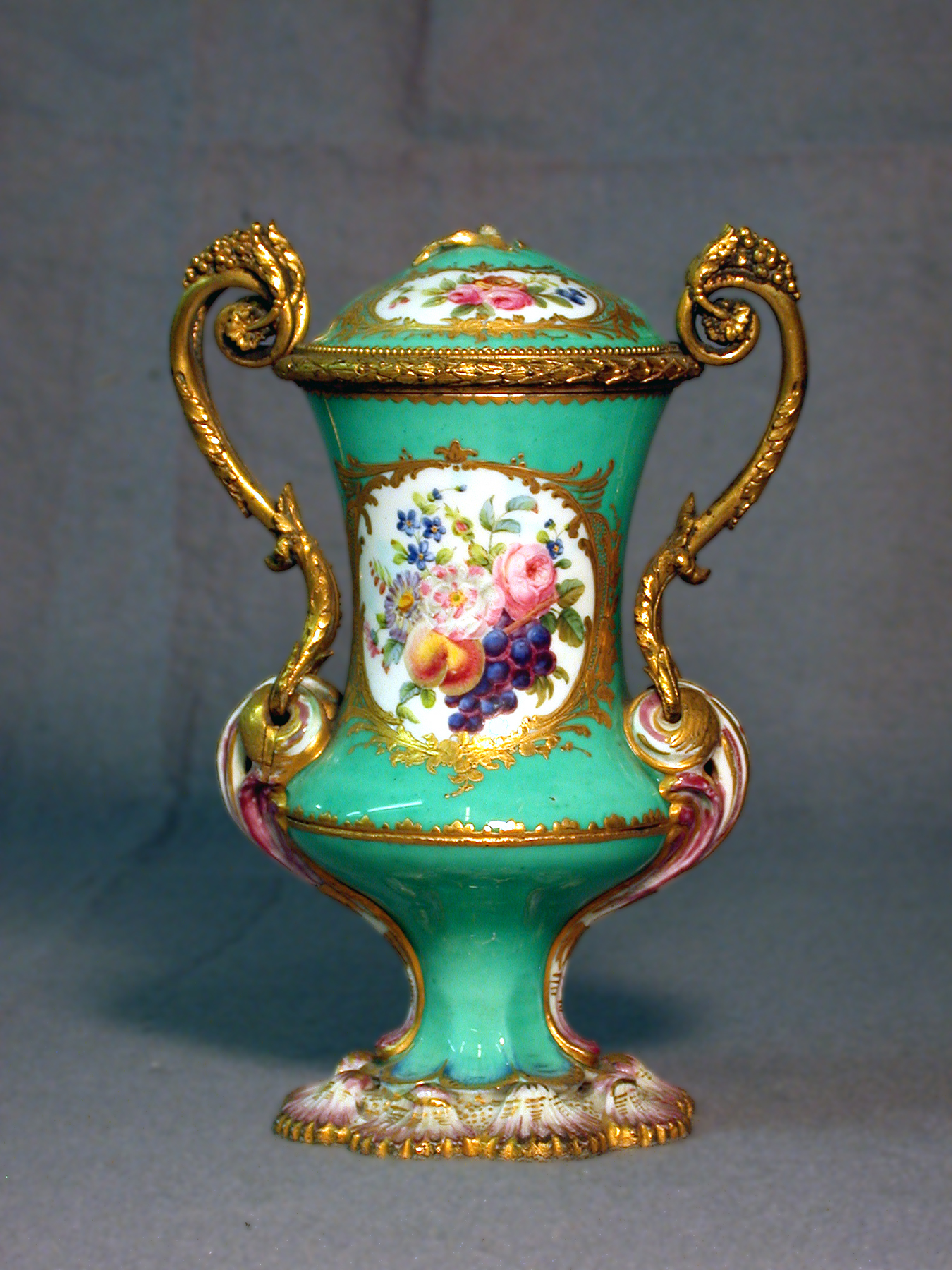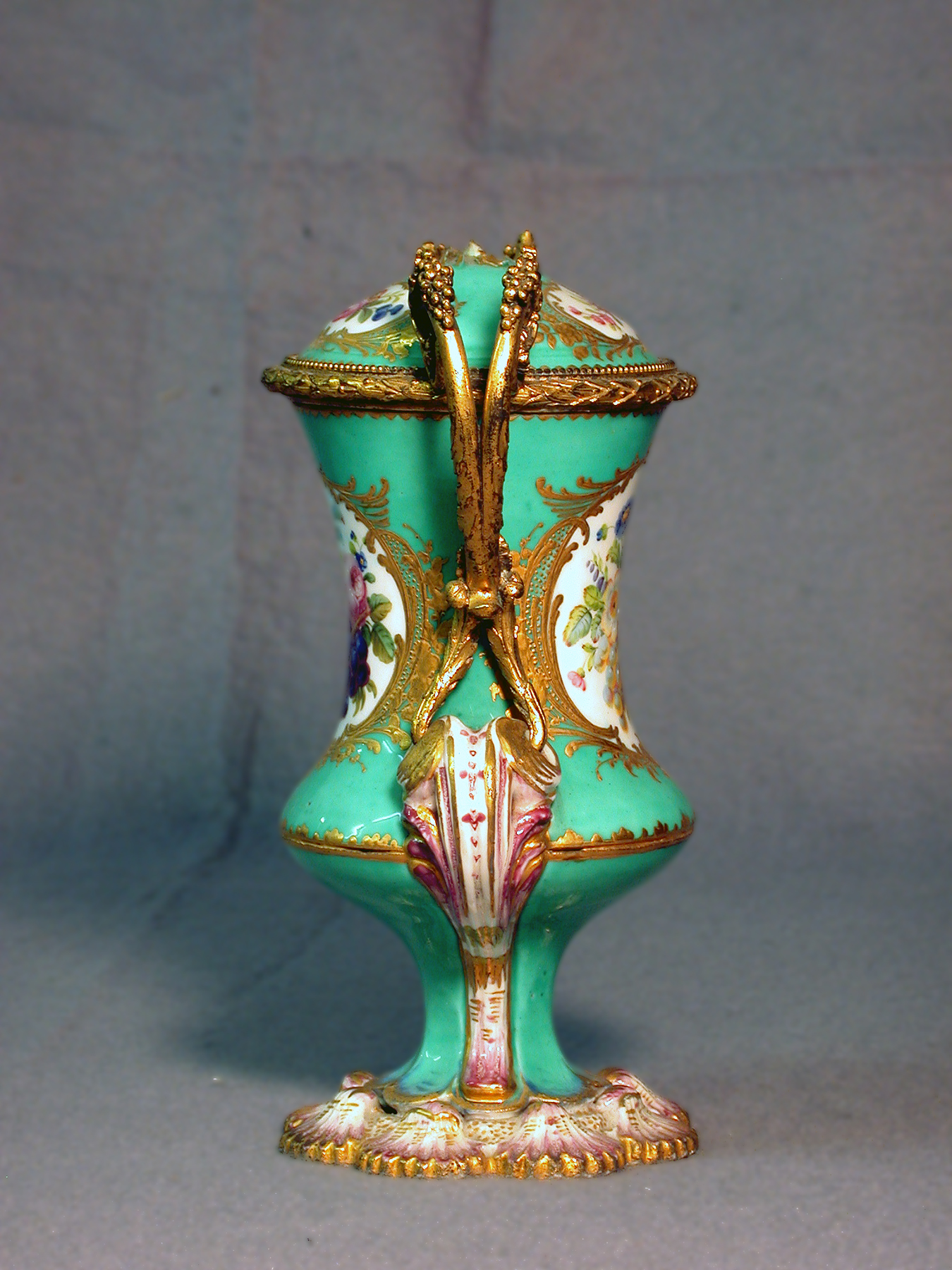Vase (vase Duplessis) with Cover
(18th and 19th Centuries )
This vase is much changed from its original appearance. Created at the French factory Vincennes in the early 1750s, where this shape was called a “vase Duplessis” after its designer, the goldsmith Jean-Claude Duplessis. Its urn-shaped form was significantly taller when it was first made and has been cut down. Originally porcelain handles extended up from the scrolling element at each side where the bottoms of later gilt-metal handles have been attached. These and the other metal mounts, the green ground color, and the painted decoration were likely added in the 19th century to make this piece more salable to collectors. The vase did not originally have a cover, the current cover may have been repurposed a Vincennes or Sèvres sugar bowl—a marriage also likely made in the 19th century.
Inscription
Provenance
Provenance (from the French provenir, 'to come from/forth') is the chronology of the ownership, custody, or location of a historical object. Learn more about provenance at the Walters.
Acquired by William T. or Henry Walters, Baltimore, before 1909 [date and mode of acquisition unknown]; by bequest to the Walters Art Museum, 1931.
Geographies
France, Sèvres (Place of Origin)
Measurements
H: 6 15/16 in. (17.7 cm)
Credit Line
Acquired by William T. or Henry Walters
Location in Museum
Not on view
Accession Number
In libraries, galleries, museums, and archives, an accession number is a unique identifier assigned to each object in the collection.
In libraries, galleries, museums, and archives, an accession number is a unique identifier assigned to each object in the collection.
48.763






